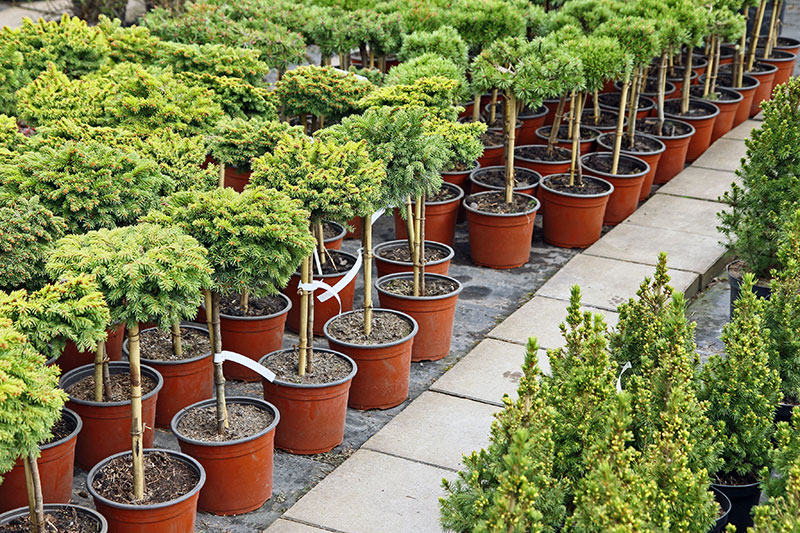Flowers and plants provide a fairly inexpensive and quick way to transform your landscape. However, trees and shrubs require a bigger initial investment and more careful thought when planting and maintaining. Let’s dig into the top considerations for picking the best option for your yard.
First, what do you want the tree or shrub to do for you? Are you simply looking for something eye-catching to add curb appeal? Perhaps you want privacy, shade, or even edible fruit. Making a list of attributes you are looking for will help narrow down your options. Equally important are traits you do not want. For instance, flowering trees may be beautiful, but they can also be messy. Trees and shrubs that produce berries are excellent food sources for wildlife, but do you really want bird poop all over your car or stains on your patio from fallen berries?
This brings us to the next factor. Size. You need to measure the area where you would potentially like to plant a tree or shrub. This is a critical step and will save you problems down the line. For instance, take a close look at the height of your location. Are there power lines above? Other trees? What plants will be underneath? Trees cast shadows. Will you be overshading an area that needs full sun? You don’t want to plant larger trees (commonly referred to as shade trees) too close to your home. Knowing how a tree’s root systems grow will help you avoid plumbing issues and damage to concrete walkways or driveways due to root expansion. Shade trees are typically categorized as trees reaching up to 60 feet or more. Smaller trees are usually referred to as ornamental trees and typically grow to less than 30 feet tall and have a 10-20-foot-wide canopy. Trimming your trees is easy when they are small but once they become mature it gets expensive to have a professional come out and trim limbs away from potentially hazardous situations. We have all witnessed the monster storms we have here in East Texas. Being mindful of tree type and location is incredibly important for safety as well.
So, you have decided on an ornamental or shade tree and you have picked your location. The next thing to note is the existing soil and climate. The easiest thing to do is to pick a tree or shrub that is naturally adapted to the soil you have on site. We have clay soil in the area along with sandy loam. The type of soil impacts the moisture retention at the planting site, as well as fertilizer needs. Looking at the USDA hardiness zone map can help as well, particularly when it comes to your tree or shrub surviving freezes and the hot, humid weather we get. It is possible to amend your soil and set up drip irrigation should your tree or shrub require more than what is available.
Finally, what will your future tree or shrub look like year-round? Something evergreen that never loses its leaves vs. a deciduous tree that sheds in the fall should factor into your decision making. There are many different varieties of trees and shrubs, and typically local nurseries should stock the ones best suited to your area but that is not always the case. To avoid making a costly mistake by investing in the wrong tree or shrub, reach out to us. We have a certified arborist on staff available to consult with you, source the correct tree/shrub, have the soil evaluated and augmented if necessary and install your new addition to your landscape.








